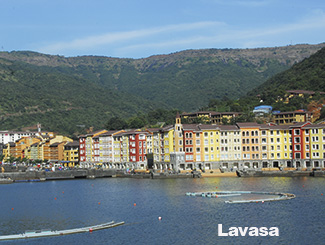 by Simona Storchi29
Ottobre
2014
by Simona Storchi29
Ottobre
2014
The world’s new city leaders
Building new cities, expanding large urban areas and planning new developments are traditionally the tasks of local administrators. But in the present economic climate, who are today’s city leaders? What are the characteristics of the new towns of the twenty-first century?
Today the idea of building new cities in Europe is no longer conceivable, so instead we have to focus on restyling urban areas and redeveloping neighbourhoods, suburbs and city centres. The last large-scale works built from scratch in Europe were those constructed to meet the housing crisis following the Second World War. Today’s new cities are located in the East. China has a project to build 400 new towns, while in India it has been calculated that 200 new cities will be needed to accommodate population growth over the next few years. These are countries where the private sector has wrested the role of city leaders from the local administrators.
But to what extent does this change in leadership affect quality and development? Michelle Provoost, director of International Town Institute – a no-profit think tank specialising in urban planning and urban communities based in Almera, near Amsterdam – explains that in Asia the role of the local government in urban development has already largely been taken over by private parties, mainly large multinational enterprises. “Unlike European new towns, the new generation of Asian cities have come into being entirely under the aegis of the private sector without the contribution of institutions, associations and local organisations, which in Europe made an active contribution to economic growth, modernisation, emancipation and the equal distribution of knowledge and income.” With constant growth in GDP and a corresponding rate of urbanisation, there is clearly a strong link between the two trends. “It is above all the rising Asian middle classes enjoying a rapid improvement in their living standards who are choosing to move to the new towns, mainly for economic reasons but also to enjoy a higher quality of living and safety.” But what are the characteristics of these new cities? Michelle Provoost analyses a few of them as experiments in the fields of economics, governance and technology.
The smart city is best exemplified by the Korean city New Songdo, developed and financed by American developer Stan Gale. “This kind of city is defined as a ‘city-in-a-box’, where all the residential, medical, educational and business information systems are linked. This ‘total connectivity’ makes governance more efficient and aims to provide its residents with a comfortable and convenient lifestyle, although it is criticized because of privacy issues and a high degree of control. The ‘city-in-a-box’ is being marketed with its ubiquitous IT possibilities to attract businesses combined with environmental sustainability. The model chosen for governance is the Indian city of Lavasa, a completely privately developed suburban city populated by middle classes from nearby Pune. “The project meets the market demand of middle class families, attracted by safety, a picturesque setting, clean streets and a coherent architectural character.” The developer organizes all public services (including the road connecting Lavasa to Pune), offering a quality of life that is unusual in India. Lavasa is based on an innovative, profitable business model, in which the corporation is partnering more than fifty joint venture companies (low and high tech), which are service providers in Lavasa. Reforming governance was the main challenge in building this city as a prototype for all income levels, reinventing a governance model based on best practices from around the world. The next model is that of the commercial city, designed, planned and built by developers as a profitable business, a commercial product. In London the building of Strand East is being financed by Inter IKEA, putting the capital of the furniture multinational to use in the redevelopment of an urban area based on the inclusive, diverse and small scale urban model typical of the Swedish brand. Another example is PlanIT Valley in Portugal, a city built around a novel financial, organizational and design concept based on the IT infrastructure developed by the company Living PlanIT, an operating system managing every single aspect of city life and a network of hundreds of partners involved in an integrated ecosystem based on this IT platform. “The situation has clearly changed and European developers can look to Asian cities as laboratories to invent new financing strategies, as places in which to invest and try out new forms of sustainability,” commented Provoost. “The role of the private sector has grown and in some cases has taken over the public sector. This must help local governments and city leaders here in Europe to appreciate the need for a farsighted strategic vision and to understand that the attractiveness and competitiveness of a city will be measured in terms of its identity, the vision it represents and the quality of living that it offers at all levels: all aspects that have determined the success or failure of our cities.”
The questions that today’s city leaders must answer are: “What will be the quality and value of our cities in the long term?”, “How will they be governed?”, “Is efficiency and control the highest goal we are striving for or do we also want an inclusive, flexible, diverse and dynamic society?”.